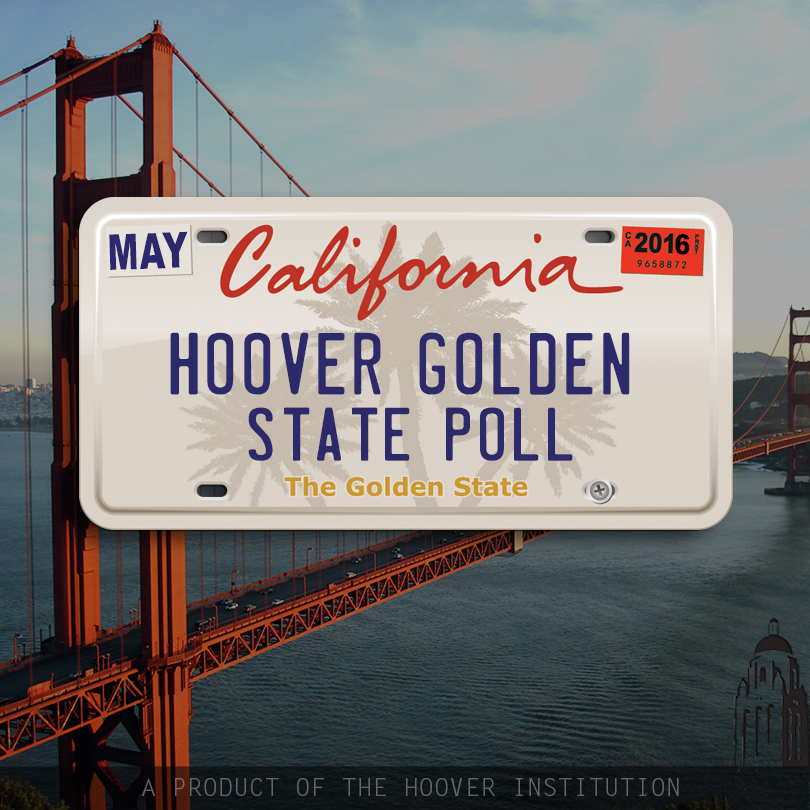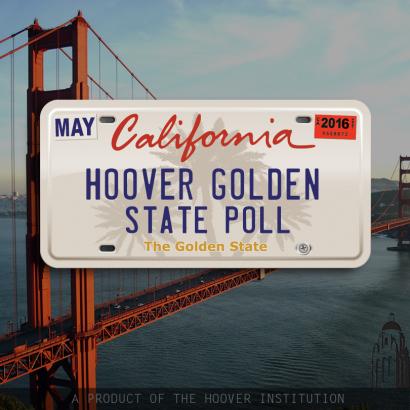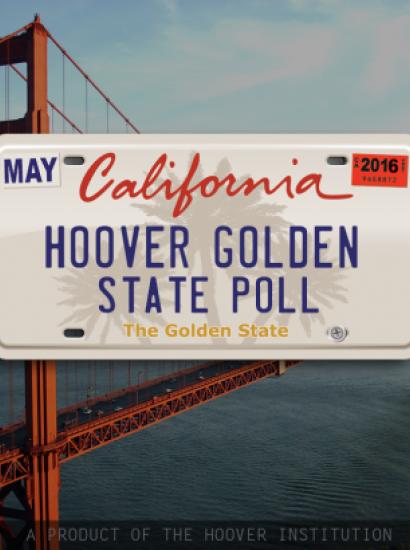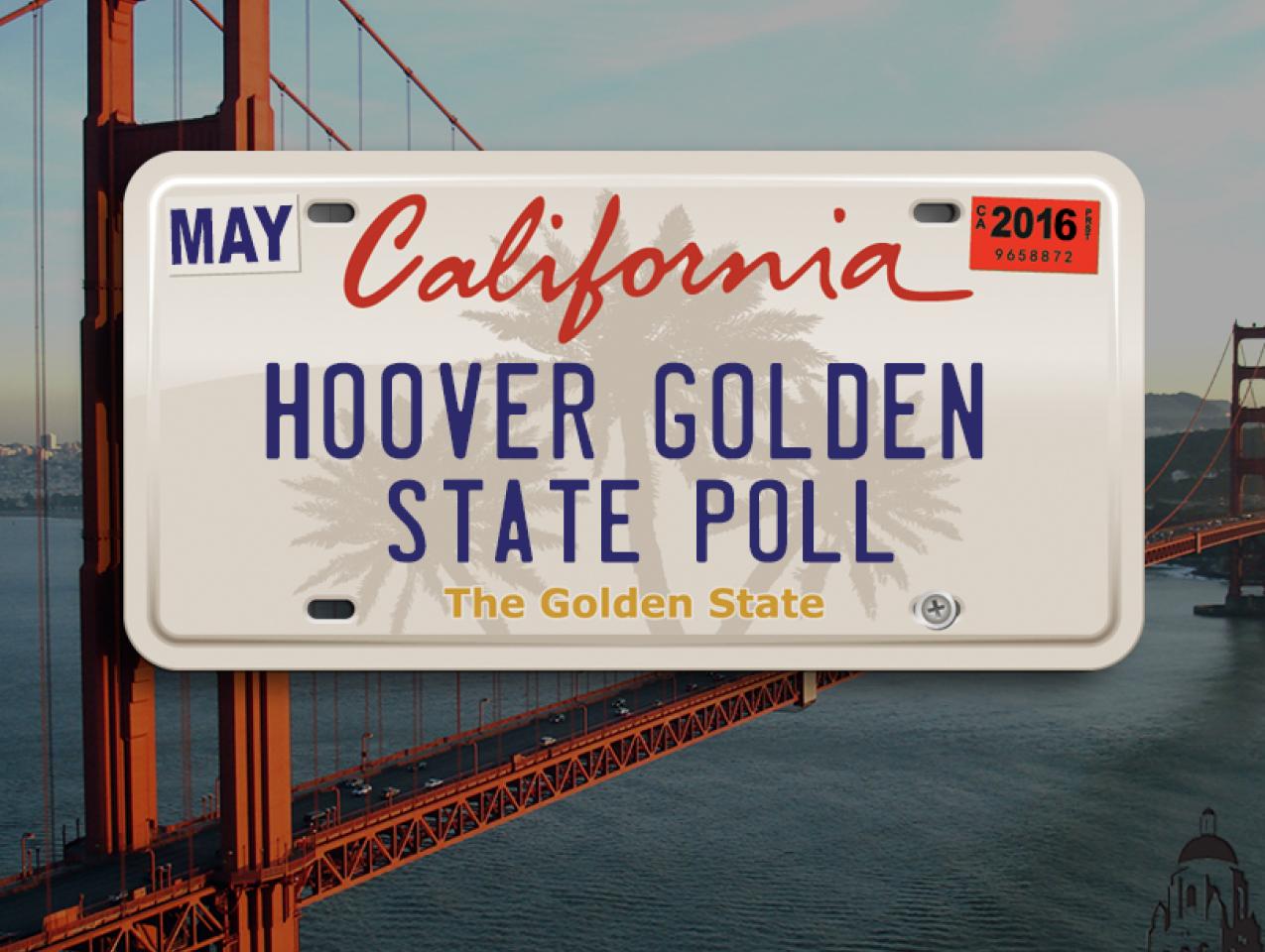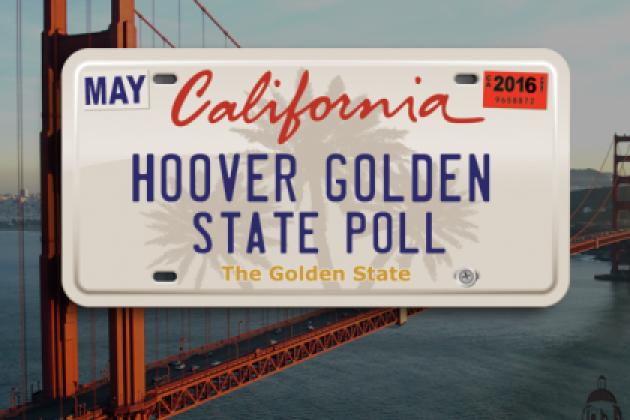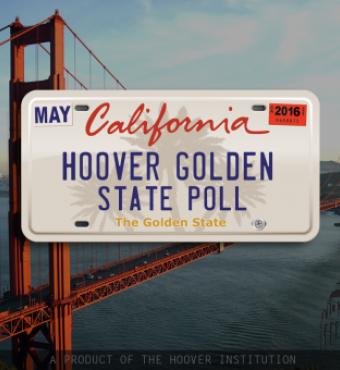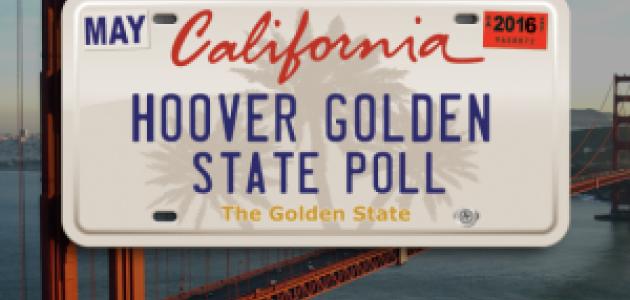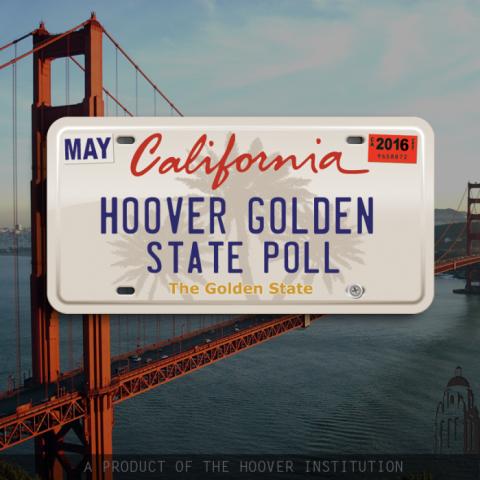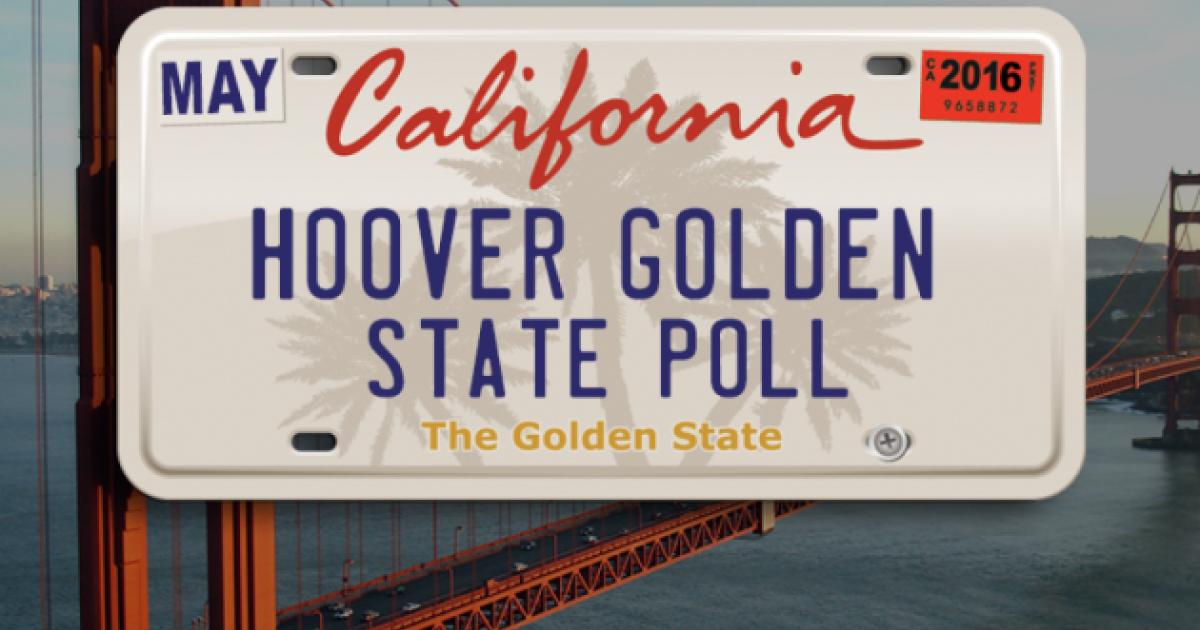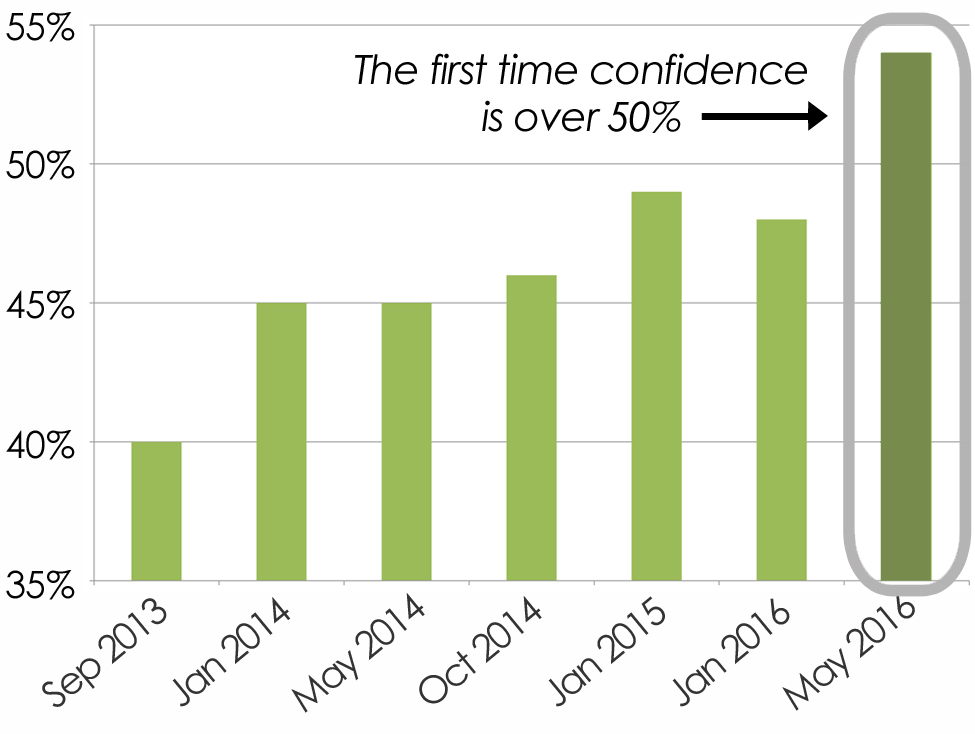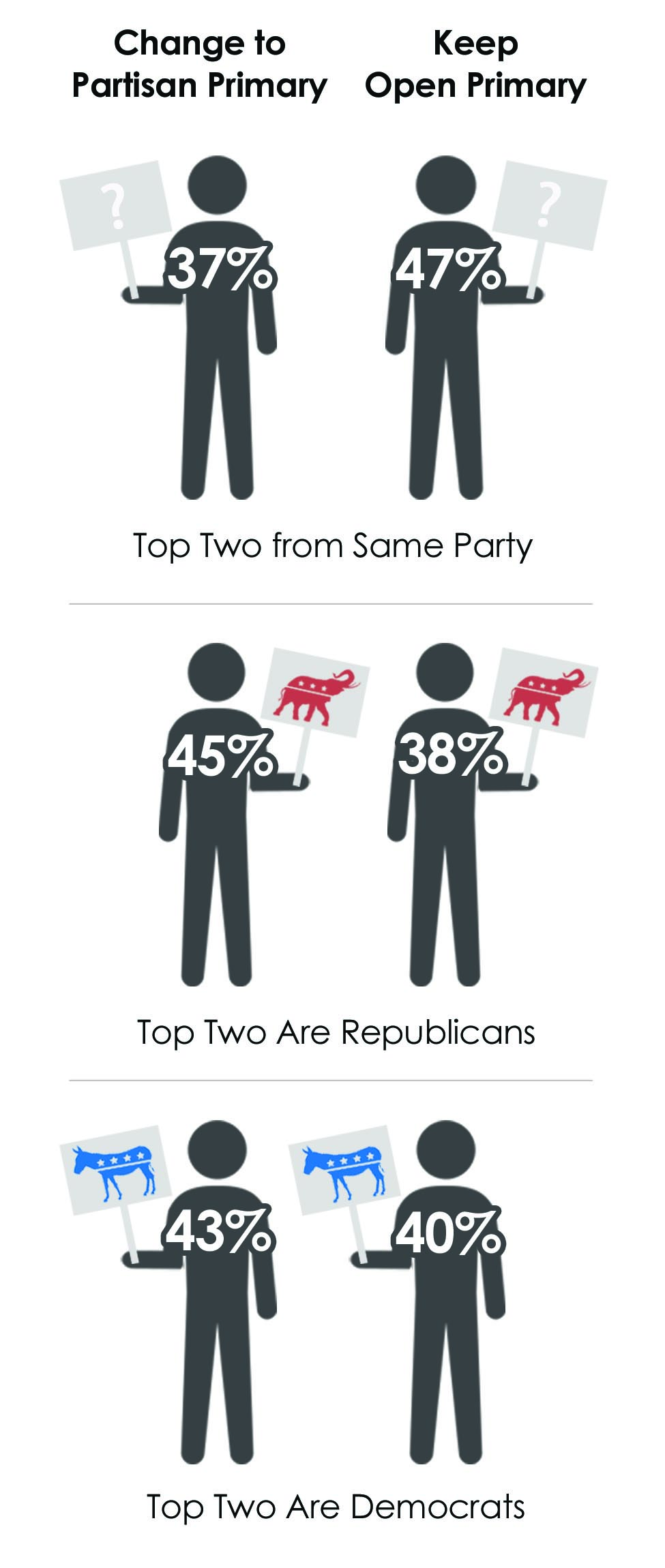- Politics, Institutions, and Public Opinion
- State & Local
- California
Since 2000, on average, 44% of registered voters have cast a ballot in the California Presidential primary – a whopping 31 points below the average Presidential general election turnout. There has been much debate about the causes and consequences of low primary turnout, but at the end of the day, it is apparent that while the June primary lays the foundation for the November general election, Californians don’t have much urgency to be a part of that masonry. Based on the May 2016 Golden State Poll, California’s electoral foundation isn’t necessarily much different than what other electorates are laying.
“It’s the economy, stupid”
Made famous by Bill Clinton’s 1992 strategist James Carville, the notion that elections are all about the economy is one rooted in political science research. Despite campaigns pushing all sorts of issues on the campaign trail, at the end of the day, voters are concerned about their pocketbook.
And despite signs of improving economic confidence, there remain hints of lingering angst among certain Californians. Since the last pre-primary Golden State Poll in May 2014, those saying they are better off compared to a year ago have surged 8 points versus 9 points drop among those saying they are worse off. Still not an overwhelming sense of economic confidence considering a vast plurality (46%) still believe their finances are stuck in neutral, but the general trend is positive. Looking forward, while a majority of Californians think their finances will remain the same over the next six months, again we see general movement in the better off direction. Moreover, for the first time a majority (54%) of employed Californians are confident in their ability to find a similarly paying new job in the next 6 months.
But while the overall news is good, it does mask some remaining economic anxiety. Self-identified Republicans are more likely to say they are financially worse off than a year ago (35% vs. 25% for all Californians) and more likely to be pessimistic about their future financial situation (23% vs. 13%). Like we are seeing nationally with Republicans more likely to be frustrated about the state of the economy, Californian Republicans – even when taking into consideration the smaller sample size and the higher margin of error – remain less economically confident than Californians overall. Could this be enough for them to overlook ideological differences in the Presidential race? Time will tell.
Last in the Nation: Unique, but not Different?
California is among the last Presidential primaries in the country. And while California likes to view itself as a special place, its Presidential primary contests aren’t likely to yield too much differing results from what other electorates have decided.
Take for example the Democratic contest. Hillary Clinton and Bernie Sanders continue to battle it out, despite Clinton’s sizable popular vote and delegate leads. Nonetheless, Sanders has promised to give all Democrats a choice this primary season. But with Clinton leading Sanders 51% to 38%, Senator Sanders shouldn’t expect a victory from the Golden State.
However, while Clinton does have a solid 13 point lead over her competition, a closer look shows that Clinton still isn’t closing the gap within the Democratic constituencies she has struggled with all primary season – even though she is effectively the presumptive Democratic nominee. Her lead among white voters is a negligible 4 points – well within the margin of error. Among young voters, Sanders is winning a resounding 61%, even as Clinton holds double-digit leads among all other age groups. And while it is a very small sample size, Clinton is underwater by 40 points among NPP voters who plan to vote in the Democratic Presidential primary. Sanders has, across the country, forced Secretary Clinton into a tough battle for the nomination on the backs of young, white, Independent support. California’s Democratic electorate is no different.
The fact that California’s primary is essentially closed – NPP voters are allowed to vote in the Democratic Presidential contest, but have to specifically request a Democratic Presidential ballot versus just receiving one – will mostly be the reason Clinton pulls off a victory.
Even with Donald Trump the presumptive Republican nominee, he will still share the ballot with Ted Cruz, John Kasich, Ben Carson, and Jim Gilmore, and as a result, the Golden State Poll has Trump winning just 66% of the Republican primary vote. This should be of concern to the Republican nominee as 1) he faces no organized, active opposition, 2) California Republicans’ lingering economic angst plays well into his narrative, and 3) historically, California has given an overwhelming victory to the party’s presumptive nominee; for instance in 2012, Mitt Romney won 79.5% when he shared the ballot with Rick Santorum, Ron Paul, and Buddy Roemer.
If Trump remains in the mid-to-high 60’s as the Golden State Poll predicts (caveat: 9% remain undecided and given the finality of the Republican race, those supporting other candidates could vote for Trump or not vote, both of which would boost his final percentage), it wouldn’t be unlike the other recent primaries, such as Nebraska and Oregon, where Mr. Trump, without any opposition, only managed to win 65% and 67%.
California’s Top Two Still Figuring Itself Out
The Golden State has a unique electoral system in place – Proposition 14 – and in many ways candidates and voters are still trying to figure it out. In a number of occasions Congressional and state legislative races have featured an intra-party general election, but an intra-party statewide contest hasn’t occurred…yet.
There are currently 34 candidates vying to replace retiring U.S. Senator Barbara Boxer and the Republicans have a math problem. The Golden State Poll finds Attorney General Kamala Harris leading the splintered field with 26% of the vote followed by Orange County Congresswomen Loretta Sanchez at 13%. But the problem for Republicans is that both Harris and Sanchez are Democrats.
The three main Republican contenders – Duf Sundheim, Tom Del Beccaro, and Ron Unz – are all clustered together at 6%. There is still hope that a Republican can surpass Sanchez’s support; for instance, 42% of registered Republican likely voters remain undecided. If these undecided Republicans do vote and move en masse to support one candidate, one of the Republicans could prevent a Democrat vs. Democrat general election.
But what if California has its first statewide intra-party general election? Will this sour voter opinion of the top two system? When asked whether Proposition 14 should be changed back to partisan primaries or kept the same if two candidates from the same party advance in the U.S. Senate race, a strong plurality (47%) of likely voters said keep it. However, when specifically asked about two Republicans (38%) or two Democrats (40%) advancing, support for Proposition 14 fell. Overall, Harris and Sanchez advancing will test the lasting power of California’s top two.
Looking Forward to November
In a (very) early look at the general election between Hillary Clinton and Donald Trump, Clinton starts off as the favorite – unsurprisingly given California has voted for the Democratic nominee by double-digits since 1992. But there appears to be hesitation for both candidates. Clinton leads 45% to 33% for Donald Trump with Libertarian Gary Johnson winning 4%. Another 8% say they will write someone in, 9% remain unsure, and 1% say they just won’t vote.
And this brings us full circle to “it’s the economy, stupid:” another Clinton on the ballot and another reminder that voters’ pocketbooks – or at least the perception of their pocketbook – matter. Among those who say their finances are better off than last year, Clinton’s lead increases to 31 points – about the margin Obama beat both Romney and McCain. But among those who say their finances are worse off or have stayed the same, Clinton’s lead falls to just 5 points.
While it’s unlikely Trump can keep Clinton to the single-digits (or even the moderate double-digits), at the end of the day, Californian voters aren’t much different that the rest of the nation’s and what influences primary voting decisions influence the general election.

PROPOSITION 14
Passed by voters 54% to 46% in June 2010, Proposition 14 was a constitutional amendment that eliminated California’s partisan primary for state legislative, Congressional, U.S. Senate, and statewide office elections in favor of a nonpartisan blanket primary. Under the new Proposition 14 regime, all candidates run on the same primary ballot and the top two vote getters, regardless of party, move on to the general election in November. Write-in candidates are allowed in the June primary, but not in the November election. All of California’s ballot-qualified political parties opposed the initiative.







